Search
If you find yourself driving on a flat tire, pull over and follow these steps.
Updated:
Photo: iStockAs a car owner, you know one thing: loss of air pressure in tires every once in a while is inevitable. When you get a flat tire, one side of your car will take a bow. You should not be driving with a flat tire for safety purposes and replace it as soon as possible.
But what if you’ve no option left but to drive the car a short distance? This post is just about that. We will go over the steps you should follow to travel a short distance on a flat tire.
When you feel that one of your tires has run flat, turn on the hazard lights, and pull over to the side of the road. Examine how bad the tire’s condition is, and determine whether you can replace it.
To remain on the safe side, place a triangle reflector facing the traffic to warn other vehicles in advance.
Once you’ve found a safe location and a spare wheel, you can replace the flat tire. Begin by applying the parking brake and wheel wedges around every tire to ensure the vehicle does not move. Next, remove your wheel cover and bring out the wrench to loosen the lug nuts by turning them anticlockwise.
Put the jack under the vehicle and lift it to an appropriate level. Afterward, unscrew the lug nuts completely and remove the flat tire. Place the spare tire on the lug bolts, screw the lug nuts back, and replace the wheel cover. Finally, you can lower down your vehicle and stow back all the equipment.
Here’s a good resource at Dummies.com on changing a flat tire.
What should you do if you don’t have a spare tire? In this case, an emergency towing service is ideal to avoid driving with a flat tire. However, keep in mind that most companies take around 45 minutes to arrive at your location. If you’re lucky, they will replace the tire on the spot or else tow your vehicle to the nearest technician.
However, keep in mind that most companies take around 45 minutes to arrive at your location. If you’re lucky, they will replace the tire on the spot or else tow your vehicle to the nearest technician.
What if you don’t have a spare tire and the towing service is not responding? Then, you have to take the car to a tire workshop. Whether you have to travel a short distance for tire replacement or take it to a technician, the key is not to speed. Maintain a speed under 20 mph or 32 km/h when driving with flat tire.
When driving with a flat tire, take a route with fewer turns and twists. On a turning road, slow down the speed to avoid damaging the tire further.
We all have that one go-to tire technician we visit for all our tire problems. However, driving with a flat tire means you have to see the nearest expert you can find. It reduces the chances of an accident and speeds up the process.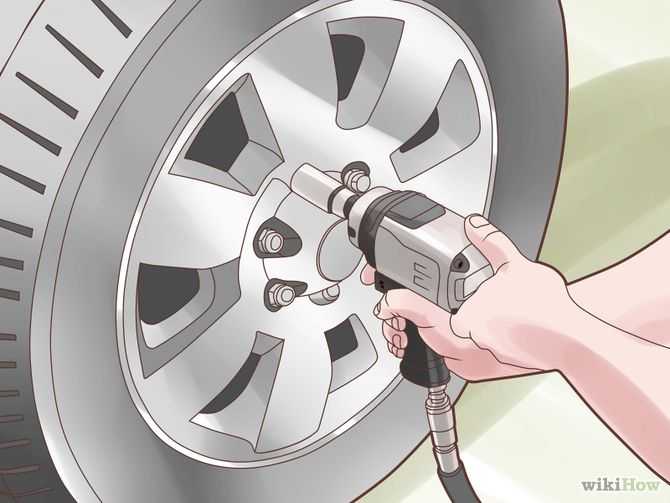
Look out for a gas station; they have staff who can pump up your tire. You can also use your mobile GPS to locate the nearest gas station.
Takeaway
Driving with a flat tire can be dangerous, so you should pull over immediately to tackle the issue. We recommend having a spare tire and the required equipment in the trunk to replace a flat tire, especially before you go on a long drive. If you don’t have a spare tire, try your luck with a towing service company, or locate the nearest gas station and approach it slowly.
Whether your flat tire was caused by a stray nail, sharp rock, or any other hazard, one thing is for certain: flat tires are a major inconvenience. The last place you want to be is stuck on the side of the road! Driving on a flat tire may even be a tempting solution to get you out of there. But is it bad to drive on a flat tire? Find out below if you can drive on a flat tire and what you need to know before you do.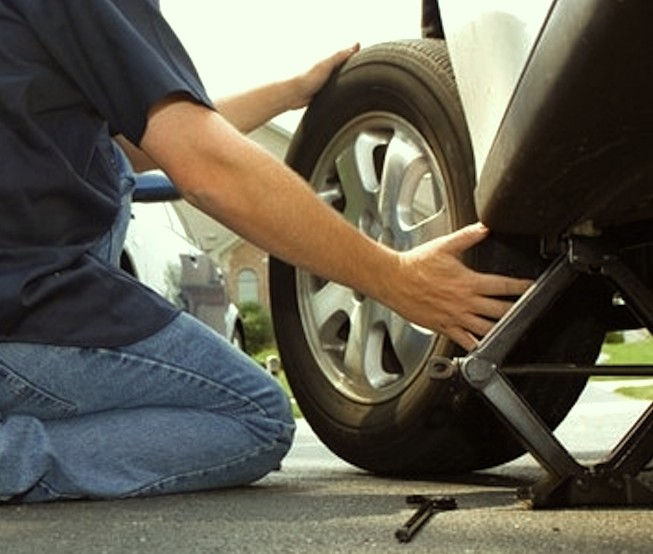
No. Do not drive on a flat tire.
However, it may be necessary to travel a short distance on a flat tire when pulling over to the side of the road. But driving on a flat tire is a surefire way to put your passengers at risk and seriously damage your vehicle. If your vehicle is equipped with Bridgestone Run-Flat tires, you can typically drive 50 miles at up to 50mph on a punctured tire*.
Not only does driving on a flat tire dangerously decrease your vehicle’s handling, it may cause structural damage to the wheel, brakes, alignment, and potentially other components like your suspension and steering system. It may be tempting to “limp” your car to the nearest repair shop, but by driving on a flat, you’ll likely end up paying to repair much more than just the tire.
So if you're not supposed to drive on a flat, what should you do instead? The first thing to do is safely maneuver to the side of the road so you can address the problem properly. From there, you’ve got a few options.
From there, you’ve got a few options.
First, you can either replace the flat with your spare tire or use an emergency sealant to fill any punctures. It’s worth noting, however, that emergency sealants typically only seal tires with punctures that are ¼ inch or smaller. They will not help if your tire is shredded, blown out, or has a large puncture.
If you don’t have a spare and sealant won’t do the trick, it’s time to call Firestone Roadside Assistance. Whether you need a tire change, a tow to the nearest auto shop, or other emergency automotive services, Firestone Roadside Assistance is ready to help 24 hours a day, seven days a week. When your car arrives at Firestone, our experienced technicians can help you decide if you need to repair or replace your flat tire.
*Repairable in limited conditions.
The best way to avoid driving on a flat tire is by not getting one in the first place. Here are a few things you can do to minimize the chances of a flat or blown-out tire:
The number one rule of tire maintenance is to check your tire pressure regularly. The National Highway Traffic Safety Administration (NHTSA) recommends checking the pressure on all of your tires — including the spare — at least once monthly. Tire pressure gauges are inexpensive and can help save you from tire trouble down the road.
The National Highway Traffic Safety Administration (NHTSA) recommends checking the pressure on all of your tires — including the spare — at least once monthly. Tire pressure gauges are inexpensive and can help save you from tire trouble down the road.
Be sure to check tire pressure when the tires are “cold,” meaning at least three hours after driving. Not only can driving with underinflated tires lead to lower fuel efficiency, but they are more prone to wear and punctures as well.
Your Tire Pressure Monitoring System (TPMS) may not warn you about low tire pressure until a tire loses a significant amount of air or if all tires are equally low, and visual inspection can be tricky — many tires lose as much as half of their pressure before appearing flatter.
It’s best to use a tire pressure gauge to regularly check that your tires are at the manufacturer-recommended pressure (you can find this information in your owner’s manual or inside the driver-side door jamb).
Along with checking your tire pressure monthly, visually inspect and rotate your tires as well. Tire rotations help spread out the wear on your tires to help them last longer. In general, you should try to rotate your tires every 5,000 to 10,000 miles. As a good rule of thumb, plan to have your tires rotated each time you get your oil changed.
Tire rotations help spread out the wear on your tires to help them last longer. In general, you should try to rotate your tires every 5,000 to 10,000 miles. As a good rule of thumb, plan to have your tires rotated each time you get your oil changed.
It’s also smart to visually inspect your tires regularly for tread wear and signs of damage. Tires should have a minimum of 3/32 inches of tread depth to be safe and should be free from cracking, bulging sidewalls, or bubbles. (Some states and manufacturers may require even more minimum tread depth.)
Along with the recommended tire pressure, tires also have a maximum load rating and maximum pressure printed on the sidewall. Heavier loads put more strain on your tires, and exceeding their load limit could lead to a tire blowout.
Always be mindful of how much weight you are loading your car with and, if necessary, increase your tire pressure to handle the increased weight, but do not exceed the maximum tire pressure.
Potholes, nails, pieces of glass — roadways are filled with potential hazards for your tires! While driving, always scan the road ahead for problems. Potholes and large road debris can damage your tires without actually puncturing them, but may cause cuts and bulges that could lead to a flat, critical tire damage or vibrations later on.
While metal pieces, rocks, and other hazards are not always avoidable, if you know you’re going to be driving near construction zones or other areas with a lot of road debris or damage, consider taking an alternate route. However, if you find that your tires are frequently flat, the problem may not be with the road, but with the tire itself.
Whether you like it or not, flats just happen sometimes. There’s no way to spot every stray nail or piece of glass on the road before it punctures your tire. For those who like to be prepared, run-flat tires provide a convenient solution to the inevitable flat.
Run-flats, like Bridgestone DriveGuard tires, are self-supporting in the event of sudden tire pressure loss. With reinforced sidewalls and cutting-edge bead technology, these tires can support the weight of your vehicle for up to 50 miles and up to 50 MPH after a puncture*. Run-flat tires give you the peace of mind to know you and your family won’t be stranded on the side of the road if you get a flat.
*Repairable in limited conditions.
Call for Firestone Roadside Assistance when you have a flat tire! We'll tow you to the nearest Firestone Complete Auto Care and fix your flat or hook you up with a new tire if your tire can't be repaired.
The absence of a spare wheel or a standard "roll-in" seriously complicates the situation. If the driver has the skills, you can put a temporary patch on the puncture, otherwise you will have to order a tow truck.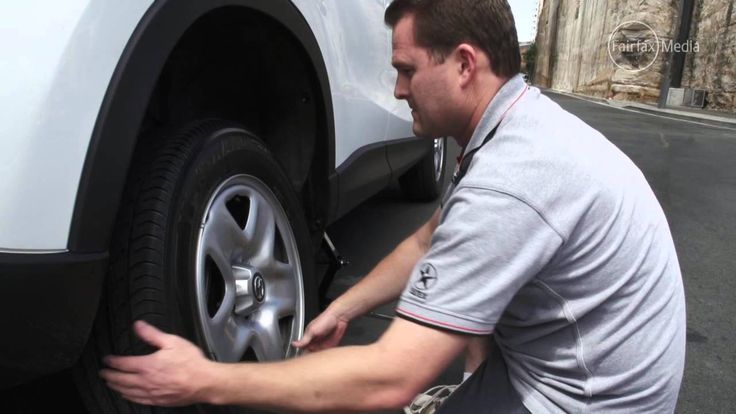
We recommend carrying a spare wheel, a repair kit for various occasions, the necessary tools, then you can get out of any traffic situation with dignity. If all this is not there, then you can drive on punched rubber a short distance to a service station or tire fitting. We are not talking about hundreds of kilometers of travel, we are talking about a short distance.
Leakage of air from a car tire can occur in different situations. At the same time, punching is not necessary, there are other unforeseen and unpleasant situations. Most common:
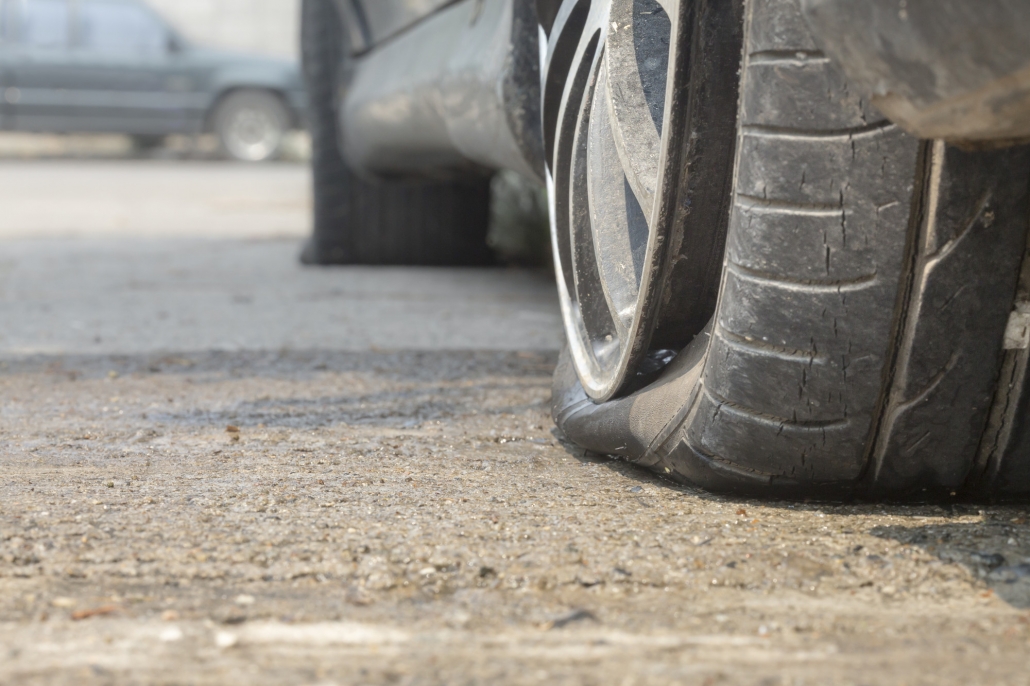
Potholes or bumps in the road can be a serious problem. Hitting such an obstacle at high speed can lead to deformation of the car disk, subsequently to damage to the rubber. Very serious damage, which is impossible to fix on your own, without the use of special equipment, you need to go to a tire service.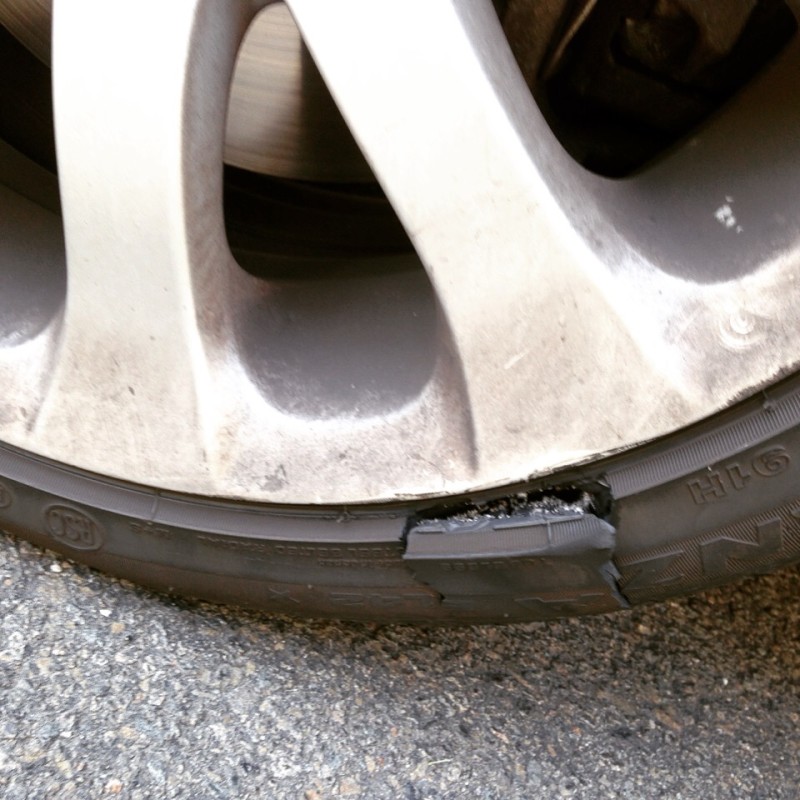
Use of used car tires - adhere to manufacturer's specified service life. Otherwise, the wheel may deflate due to high wear. There is a risk of explosion directly during operation.
Problems exist with tubeless tires - the fitting sometimes does not fit well on the disc, air leaks.
The main causes that lead to damage to car tires and air leakage are indicated. Whether it is possible to drive on a flat tire is determined by the driver himself, taking into account his experience and capabilities.
Driving with a flat tire is not recommended. Driving a car is significantly more difficult, there is a risk of getting into an accident, creating a threat to other road users.
Among the main problems that can lead to driving with low tire pressure are:

A flat tire is a serious hazard. Each driver must understand this and take all necessary measures to eliminate the problem. In no case should a puncture be ignored, at high speed the situation can completely get out of control. The ideal would be to replace the wheel with a spare, repair at the nearest tire shop.
A car tire is a complex system. Consists of different elements. Manufacturers use special technologies and materials to provide the declared driving characteristics of the car. The special pattern on the main part of the tire has its own functionality, and does not serve solely for beauty. Any deviation from the norm leads to a decrease in the functionality of the tire, respectively, the car loses its qualities. Its use becomes unsafe until the problem is solved.
Summer Drive Protection Sound Comfort
Rating:
4.5
Tires Goodyear Eagle F1 Asymmetric 3 SUV
Summer Drive protection
Rating:
4. 5
5
Tires Goodyear Eagle Sport TZ
Summer Drive protection
Rating:
4.5
Tires Goodyear EfficientGrip 2 SUV
Summer Drive Protection Run On Flat
Rating:
4.5
Tires Goodyear EfficientGrip Performance
Winter Drive protection
Tires Goodyear UltraGrip Arctic 2 SUV
Winter Drive Protection Sound Comfort
Rating:
4. 5
5
Tires Goodyear UltraGrip Ice 2
Winter Drive Protection Sound Comfort
Rating:
4.5
Tires Goodyear UltraGrip Ice SUV
Winter Drive protection
Tires Goodyear UltraGrip Performance+ SUV
All season Drive protection
Rating:
5
Tires Goodyear Vector 4Seasons Gen-3 SUV
Summer Drive Protection Run On Flat
Rating:
4
Tires Goodyear Wrangler HP All Weather
All season Drive protection
Rating:
4. 5
5
Tires Goodyear Vector 4Seasons
Summer
Rating:
4.5
Tires Goodyear Wrangler All-Terrain Adventure with Kevlar
Summer Drive protection
Rating:
4.5
Tires Goodyear EfficientGrip SUV
Summer Drive Protection Run On Flat
Rating:
4
Tires Goodyear Eagle F1 Asymmetric SUV
It is worth noting that under no circumstances should you drive with a completely flat tire.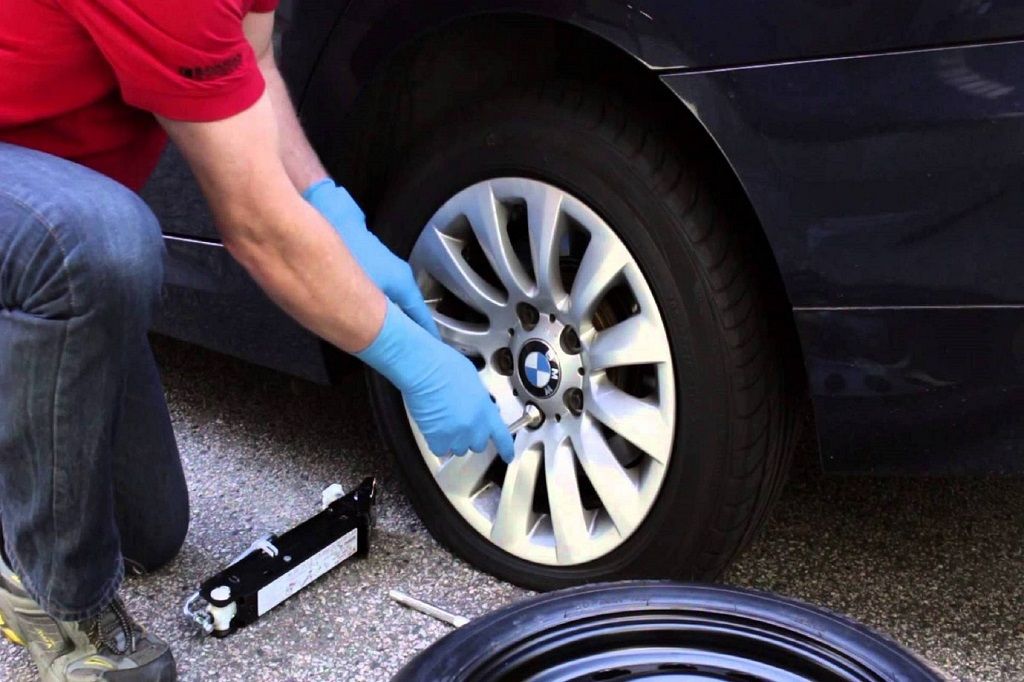 The situation can get out of control of the driver at any time, the tire will fly off the disk, he will receive damage that will lead to new problems. It's best to call a tow truck, no matter the cost.
The situation can get out of control of the driver at any time, the tire will fly off the disk, he will receive damage that will lead to new problems. It's best to call a tow truck, no matter the cost.
An exception to the rule may be a tire in which some air is still left. You can try to get to a service station or tire fitting. You can also try to inflate the tire to give yourself more time.
Low pressure driving is possible subject to the following rules:
The average distance allowed to drive with a half-flat tire is 10 kilometers. This is only allowed if the above rules are observed.
If the problem of low tire pressure, puncture or other damage is not addressed in a timely manner, it will lead to negative consequences.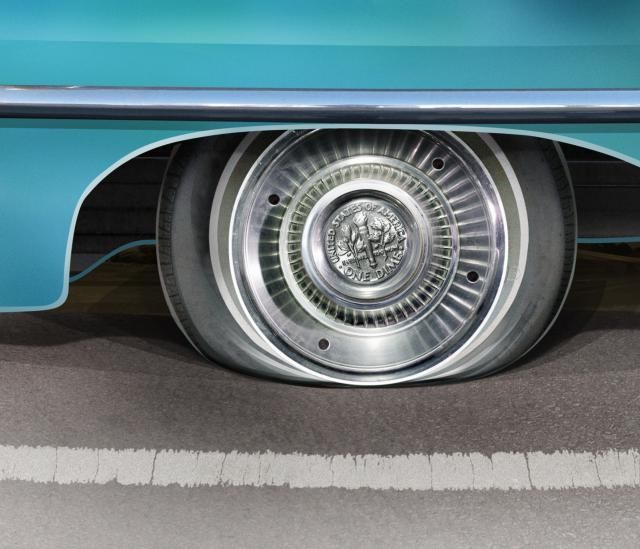 There may be problems with the operation of the following systems:
There may be problems with the operation of the following systems:
A car with flat tires is a danger to other road users and its driving characteristics are affected.
It must be understood that movement with insufficient pressure leads to deformation of the rubber. You run the risk of completely damaging the tire, subsequently replacing it with a new one. Therefore, the decision to drive on half-flat tires must be made carefully, carefully evaluate all the consequences and alternatives. For example, estimate the cost of replacing, repairing other damage with the price of a tow truck or calling a mobile tire fitting team.
For example, estimate the cost of replacing, repairing other damage with the price of a tow truck or calling a mobile tire fitting team.
The maximum speed on a car with a half-flat tire depends solely on the characteristics of the tires, the type of vehicle, and other nuances. When accelerating to a speed of more than 30 km / h, complete disassembly is possible, the tire flies off the disk.
We recommend that you have a spare wheel with you, which is supplied with the car by the manufacturer, a repair kit. You will be able to revive the wheel for a while, it will not deflate and it will be possible to get to the tire fitting.
Embraceyourfeelings.Weebly.com
Repair of a wheel pierced in the road may become a serious problem, and there is no “reserve” in the car, and there is no “reserve” in the car, and there is no “reserve” and up to the closest point. tire service many kilometers
tire service many kilometers
Maxim Stroker
Anything happens on the road, including punctures, cuts and other damage to tires. Most automakers are trying to complete their cars for the Russian market, if not with a full-fledged spare wheel, then at least with a "roll-out". However, some car models instead receive only a can of “anti-puncture chemistry”, which, after pumping into the wheel, in theory, should close up a hole in the rubber by itself. However, it happens that either the "stowaway" with the "reserve" was out of order even earlier, or the hole in the wheel is such that no magic "chemistry" can cope - for example, in the case of a side cut. And what to do in such a situation? Somehow you need to get to the tire fitting!
The question immediately arises: is it possible to somehow get to this roadside establishment on a flat tire? In some cases, yes, this is acceptable. For example, when the rubber received relatively little damage, that is, a hole through which air escapes not immediately, but after some time.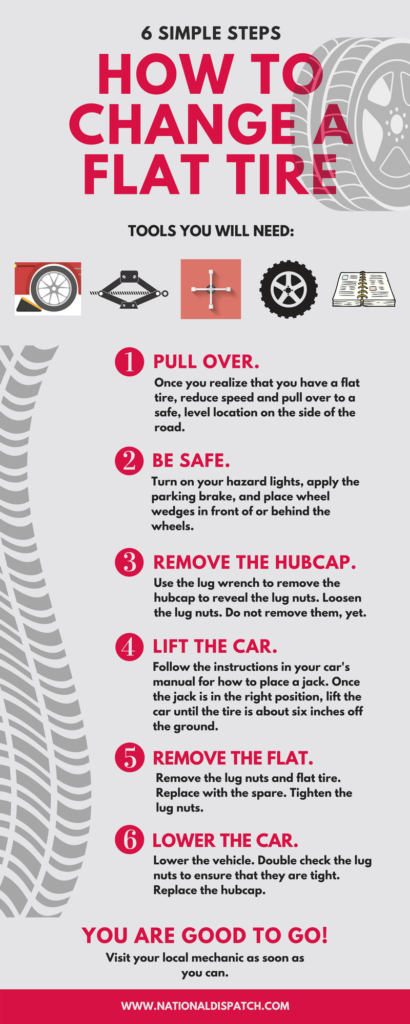 In this case, it is important to remember that you can ride on the wheel without fear of damaging the rubber exactly as long as there is at least a thin layer of air between its part adjacent to the ground and the disk. This means that if we inflate the wheel to the maximum and drive quickly, then we will have every chance to get to the tire fitting point under our own power - "short dashes", with periodic stops for new pumping of the deflating wheel.
In this case, it is important to remember that you can ride on the wheel without fear of damaging the rubber exactly as long as there is at least a thin layer of air between its part adjacent to the ground and the disk. This means that if we inflate the wheel to the maximum and drive quickly, then we will have every chance to get to the tire fitting point under our own power - "short dashes", with periodic stops for new pumping of the deflating wheel.
Of course, you don't need to drive fast, avoid potholes and potholes, and also don't make sudden maneuvers - firstly, not to lose control over the car and not to disassemble the flat tire. But if there is no air gap between the rubber and the disk, you cannot ride on a flat tire. In this case, the metal of the disk will roll directly over the rubber, "chewing" and cutting its surface from the inside, damaging the cord and so on. In other words, in case of serious damage to the wheel, when no matter how you pump it up, and the air returns to the atmosphere without lingering inside, you cannot drive on a flat tire.